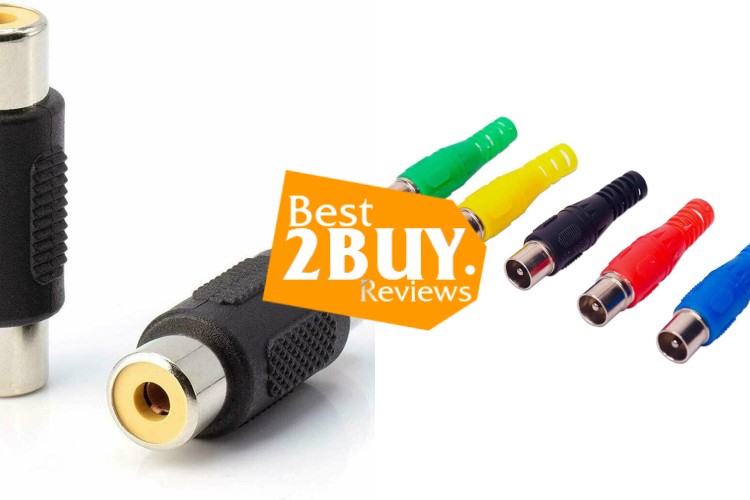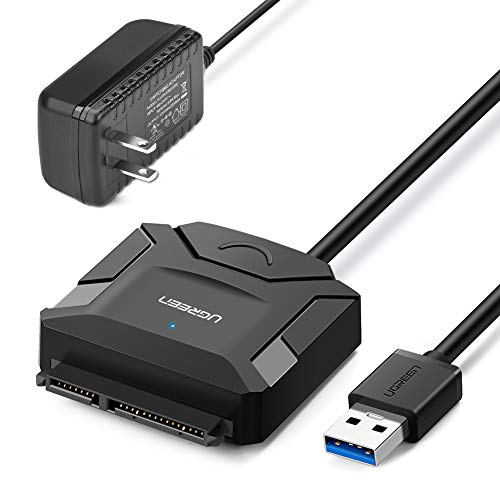Audio and video connectors and adapters are used to establish connections between different audio and video devices. They allow for the transfer of audio and video signals, enabling devices such as televisions, speakers, headphones, and gaming consoles to be connected to each other or to other sources.
- 1. Some commonly used audio and video connectors and adapters
- 1.1. HDMI (High-Definition Multimedia Interface)
- 1.2. DisplayPort
- 1.3. RCA
- 1.4. 3.5mm (1/8-inch) TRS
- 1.5. XLR
- 1.6. VGA (Video Graphics Array)
- 1.7. DVI (Digital Visual Interface)
- 1.8. Thunderbolt
- 2. Types of Audio & Video Connectors & Adapters
- 2.1. Audio Connectors:
- 2.2. Video Connectors:
- 2.3. Adapters:
- 3. Tips for buying Audio & Video Connectors & Adapters
- 3.1. Identify your needs
- 3.2. Research compatibility
- 3.3. Choose quality materials
- 3.4. Consider signal quality
- 3.5. Read reviews and ratings
- 3.6. Brand reputation
- 3.7. Check return policy
- 3.8. Consider future needs
- 3.9. Check for additional features
- 3.10. Price and budget
- 4. In conclusion
Some commonly used audio and video connectors and adapters
Here are some commonly used audio and video connectors and adapters:
HDMI (High-Definition Multimedia Interface)
HDMI is a digital audio and video connector that supports high-definition signals. It is commonly used to connect devices like TVs, projectors, Blu-ray players, and gaming consoles.
DisplayPort
DisplayPort is another digital audio and video connector used to transmit high-quality signals. It is often found on computer monitors and graphics cards.
RCA
RCA connectors, also known as phono connectors, are analog connectors that use separate plugs for video (yellow) and audio (red and white). They are commonly used in older TVs, DVD players, and audio systems.
3.5mm (1/8-inch) TRS
The 3.5mm connector, also known as the headphone jack, is a small analog audio connector commonly found on smartphones, laptops, and portable audio devices. It can be used to connect headphones, speakers, or auxiliary input/output ports.
XLR
XLR connectors are used for balanced audio signals. They are commonly used in professional audio setups, including microphones, mixers, and amplifiers.
VGA (Video Graphics Array)
VGA is an analog video connector commonly found on older computers and monitors. It carries video signals and requires a separate audio connection.
DVI (Digital Visual Interface)
DVI connectors transmit digital and analog video signals and are often used to connect computers to monitors or projectors. Some versions of DVI also carry audio signals.
Thunderbolt
Thunderbolt is a high-speed digital connector that supports both audio and video signals. It is commonly found on Mac computers and can connect to various devices such as displays, external hard drives, and audio interfaces.
In addition to connectors, there are also adapters available to convert between different connector types. For example, HDMI to VGA adapters can be used to connect an HDMI output to a VGA input.
It's important to check the specific connectors and adapters required by your devices to ensure compatibility and proper signal transfer.
Types of Audio & Video Connectors & Adapters
There are various types of audio and video connectors and adapters available to accommodate different devices and connection needs. Here are some common types:
Audio Connectors:
- 5mm (1/8-inch) TRS: This connector, commonly referred to as the headphone jack, is a small analog audio connector used in devices such as smartphones, tablets, laptops, and audio players. It can connect headphones, speakers, or auxiliary input/output ports.
- RCA: RCA connectors, also known as phono connectors, use separate plugs for video (yellow) and audio (red and white). They are commonly found in older audio and video devices, including TVs, DVD players, and home theater systems.
- XLR: XLR connectors are used for balanced audio signals and are widely used in professional audio setups. They are commonly found in microphones, mixers, amplifiers, and audio interfaces.
- TRS (Tip-Ring-Sleeve): TRS connectors come in different sizes, such as 1/4-inch and 1/8-inch, and are used for balanced or unbalanced audio signals. They are commonly used in musical instruments, professional audio equipment, and headphone outputs.
- Optical (TOSLINK): Optical connectors transmit digital audio signals using light pulses. They are commonly found in home theater systems, soundbars, and audio interfaces.
- MIDI: MIDI connectors are used for musical instrument communication and control. They are commonly used in keyboards, synthesizers, and MIDI controllers.
Video Connectors:
- HDMI (High-Definition Multimedia Interface): HDMI is a digital audio and video connector that supports high-definition signals. It is commonly used in TVs, projectors, gaming consoles, Blu-ray players, and other multimedia devices.
- DisplayPort: DisplayPort is a digital audio and video connector that can transmit high-quality signals. It is commonly found on computer monitors, graphics cards, and some laptops.
- VGA (Video Graphics Array): VGA is an analog video connector commonly found on older computers and monitors. It carries video signals and requires a separate audio connection.
- DVI (Digital Visual Interface): DVI connectors transmit digital and analog video signals. They are commonly used to connect computers to monitors or projectors. Some versions of DVI also carry audio signals.
- Component Video: Component video connectors use three separate cables for transmitting analog video signals (red, green, and blue). They are commonly found on older TVs, DVD players, and gaming consoles.
Adapters:
Apart from connectors, adapters are available to convert between different connector types. Some commonly used adapters include:
- HDMI to VGA: Converts HDMI signals to VGA for compatibility with older displays or projectors.
- DVI to HDMI: Converts DVI signals to HDMI for connecting devices with different connectors.
- RCA to 3.5mm: Converts RCA audio signals to 3.5mm for connecting audio devices with different connectors.
- DisplayPort to HDMI: Converts DisplayPort signals to HDMI for connecting devices with different connectors.
- VGA to DVI: Converts VGA signals to DVI for connecting devices with different connectors.
These are just a few examples of audio and video connectors and adapters. The specific types required will depend on the devices you are connecting and their connector compatibility.
Tips for buying Audio & Video Connectors & Adapters
When buying audio and video connectors and adapters, it's important to consider several factors to ensure compatibility, quality, and reliability. Here are some tips to keep in mind:
Identify your needs
Determine the specific connectors and adapters you require based on the devices you want to connect. Check the input and output ports of your devices and note the connector types they support.
Research compatibility
Ensure that the connectors and adapters you choose are compatible with your devices. Consider factors such as audio and video signal types (analog or digital), resolutions, and audio channels. Check the specifications of your devices and the connectors/adapters to ensure they are a match.
Choose quality materials
Look for connectors and adapters made from high-quality materials to ensure reliable and durable connections. Connectors made of metal are generally more robust than those made of plastic.
Consider signal quality
For digital audio and video signals, choose connectors and adapters that support the required bandwidth and standards. This is especially important for high-definition or 4K video signals and high-quality audio formats.
Read reviews and ratings
Before making a purchase, read customer reviews and ratings of the connectors and adapters you are considering. This can provide insights into the performance, durability, and compatibility of the products.
Brand reputation
Opt for well-known and reputable brands that have a track record of producing reliable connectors and adapters. Established brands often have better quality control and offer warranties or customer support.
Check return policy
Verify the return policy of the seller or retailer from whom you are purchasing the connectors and adapters. This will give you the flexibility to return or exchange the product if it doesn't meet your requirements or is incompatible with your devices.
Consider future needs
Anticipate any potential future requirements and consider connectors and adapters that can accommodate them. For example, if you plan to upgrade to higher-resolution devices in the future, ensure that the connectors and adapters you purchase can support those resolutions.
Check for additional features
Some connectors and adapters may have additional features such as gold-plated connectors for better conductivity or built-in signal amplification. Consider these features based on your specific needs and budget.
Price and budget
While price is an important consideration, prioritize quality and compatibility over the lowest cost. Cheap connectors and adapters may result in poor signal quality, unreliable connections, or compatibility issues. Set a reasonable budget and choose products that strike a balance between quality and affordability.
By following these tips, you can make informed decisions when purchasing audio and video connectors and adapters, ensuring that you get the right ones for your devices and establish reliable connections.
In conclusion
With the right audio and video connectors and adapters, you can enjoy the highest quality sound and visuals from your home entertainment system. To buy online audio and video connectors and adapters you can check out in Amazon. Amazon offers many products with various brands and fit your budget. Besides, check more our recommendation in best2buy.reviews. we listed for you top best audio and video connectors and adapters and it’s very convenient to buy a suitable audio and video connectors and adapters











